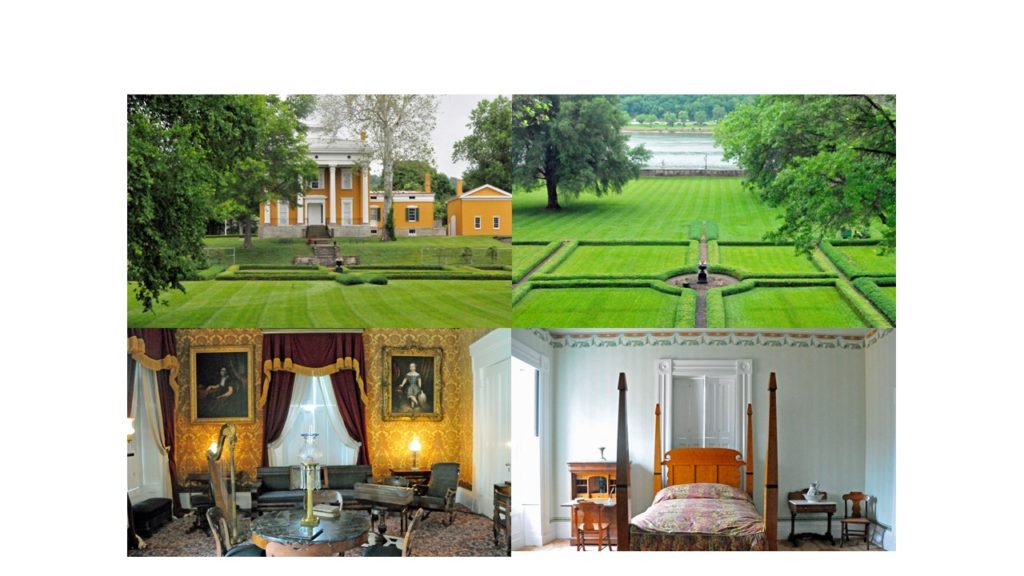A visit to the Lanier Mansion in Madison, Indiana, provides an opportunity both to see one of the country’s finest Greek Revival homes and to learn about a Hoosier hero.
In 1817, 17-year-old James Lanier moved with his family to Madison. Three years later, he opened a law office and soon became Clerk of the Indiana General Assembly. By the 1830s, because of successful investments in Indiana’s first railroad, he was among Indiana’s wealthiest citizens. In 1840, Lanier engaged a Madison architect to design a house for him on a ten-acre site overlooking the Ohio River. When completed in 1844, the exterior of the brick house, encompassing about 13,500 square feet, featured a riverside portico with four fluted Corinthian columns and dentiled entablatures containing circular windows. The three-story interior included a curved wall, Ionic columns separating two first-floor parlors and a spiral staircase extending toward a skylight in the cupola. Lanier moved to New York in 1851 to manage an investment bank he founded, but he did not forget Indiana. When the Indiana Legislature refused to provide funding for troops to support the Union cause in the Civil War, he loaned the state $400,000 for that purpose, a sum equal to about $13,000,000 today.
James Lanier died in 1881, but his mansion stayed in the Lanier family until 1917, when his youngest son donated it to the Jefferson County Historical Society, which in turn gave it to the State of Indiana. Today, the Indiana State Museum operates the Lanier Mansion and the surrounding grounds. The appearance of the house and grounds reflects significant work in the 1990s to restore them to their original appearance and grandeur. The carpets and wallpaper are reproductions of those available in 1844. The formal gardens, added by James’ son Alexander, were restored based on an 1876 lithograph of the site.

Comments are closed.